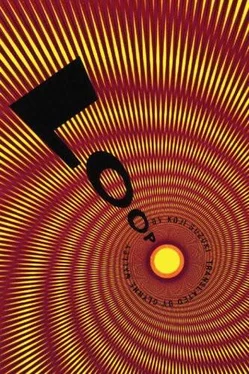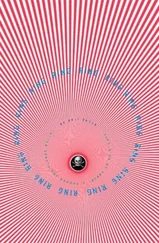Kaoru assumed he meant the research centre. Now that he thought about it, he hadn't seen anybody here besides the receptionist and Amano. He suspected the reason had something to do with the virus.
"My father told me that many of you who participated in the Loop research have died of cancer."
"Very many indeed."
"Is there a specific reason?"
"Well, I don't believe there's been any statement to that effect."
Kaoru couldn't believe it was a mere coincidence, though, and if some kind of cause-and-effect relationship could be established, it would be epochal. It might lead to the discovery of a new way of treating viral cancer.
"Do you know where the first victim was discovered?" As a microbiologist, Amano should know a lot about that sort of thing.
"It's been hard to get exact data, because it's hard to distinguish it from previous varieties of cancer, but the MHC virus was first discovered in an American patient."
Kaoru had heard rumours to that effect, that America had been the birthplace of the disease.
"Where in America?"
"The victim was a computer technician living in Albuquerque, New Mexico."
Amano frowned, as if he'd just noticed the curious commonality. The MHC virus had been first discovered in the body of a computer technician. The infection rate among researchers at this facility, a computer-research centre, was much higher than average. Of course, it wasn't totally beyond the realm of coincidence, but…
Amano's frown only lasted an instant. The coincidence struck him, but he immediately decided it wasn't worth assigning a special explanation to, and so he erased the frown.
And then he stood up quickly, as if in confirmation of what Kaoru guessed to be his thought process.
"Oh, yes. There's an old, old videotape you might like to take a look at."
"A videotape?" Kaoru felt himself tense up; he didn't know why.
"It's something Futami-sensei's staff put together. A sort of introduction to their research aims and methods. Part of their job was to elicit budgetary contributions from various sources. The video was just a promotional tool, but it's the best and quickest explanation of the purpose behind the Loop."
Amano went through the door first, urging Kaoru to follow. "This way, please."
The hallway snaked through several turns as it led through the complex of laboratories. Finally, Amano showed Kaoru into what looked like a reception room. It had a table and sofas.
There were no windows; the room had to be in the middle of the building. The furnishings put Kaoru in mind of an art gallery-framed pictures adorned the walls.
What was strange was that there was exactly one picture on each wall, at exactly the same height, at exactly the same distance from the corners, in exactly the same size frame-as if they were icons hung to keep away evil spirits or something. Each frame contained a modernist painting incorporating photography.
Kaoru's eyes were riveted to the pictures. They seemed to have captured in photographs some rectangular piece of modern art from four sides and then distorted it; as he looked around the room he got the feeling that he was inside some kind of angular construction. Modern art objects usually gave a cold, hard impression. And what about the aesthetic sense that had placed, not the object itself, but pictures of it at the same point on all four walls? It was as if the fact that they were pictures was emphasizing a certain obsessiveness.
Kaoru looked closely at one of the pictures to see if he could make out the name of the artist. There was a signature, a foreign name, but it was hard to make out. A "C…" and an "Eliot…" "Please. Have a seat."
At the sound of Amano's voice behind him, Kaoru remembered where he was. He sat on the couch to which Amano was pointing, and noticed a 32-inch television facing him. Amano must have pulled it out of the cabinet while he wasn't looking.
Amano opened another cabinet and took out a videotape. The tape had a label on its spine, and the label had a title written on it in large characters.
LOOP
There was no way he could miss it.
The video began by explaining the concept of artificial life. The program was aimed at a general audience, and its makers had assumed they needed to nail down the basics first.
Amano glanced at Kaoru and laughed. "Shall we skip this part?"
He felt it was safe to assume that any son of Hideyuki Futami would have a precise grasp of what artificial life was. Kaoru nodded, and Amano fast-forwarded.
The screen displayed a succession of geometrical patterns, appearing, changing, flickering, and disappearing.
Artificial life did not mean a biotech lab with people cutting and pasting DNA to create man-made monsters. Nor did it involve cloning technology. It was a computer simulation: man-made life forms appearing and disappearing on computer monitors.
It was fair to say that the idea behind artificial life had come from the Life Game, a computer game in general circulation toward the end of the last century.
In its earliest forms, it was rather like playing on a chess board. The computer screen was filled with intersecting lines in two dimensions, like a chess board, only with a far greater number of squares. Each square was known as a cell. A cell could be either alive or dead: a "living" cell was black, while a "dead" cell had no colour. A glance at the board showed only the "living" cells, coloured black. Each cell bordered eight other cells on the top, bottom, left, right, top right, bottom right, top left, and bottom left. Rules were determined for the cells. For example, it might be decided for a "living" cell that if it bordered on two or three "living" cells, and neither more nor less, it would survive to the next generation; if it bordered on no "living" cells, only one, or four or more, it would "die".
At the beginning of play, living and dead cells were randomly determined, and play proceeded from one generation to the next, time advancing digitally, with cells living or dying in each generation. If a cell had two or three cells adjacent to it, it would be sustained by these neighbours and live on, while if it had one or no cells nearby, it would die of loneliness, and likewise, if it had four or more neighbours, it would die of overcrowding.
Since the living cells were represented by black squares, with each passing generation the monochromatic pattern on the display changed.
The principle behind the game was quite simple, but in actual play a wide variety of patterns was possible, with highly suggestive results. One pattern found squares spreading slantwise after a certain number of generations. Another pattern saw what looked like repeated tremors. Some patterns were stable, with no change at all. Some patterns negotiated with each other, changing shape on the board like living beings. These changes continued until all the cells had died out, or the patterns all became fixed, with no further movement.
As they developed the concept of the Life Game, researchers started to detect what seemed like signs of life within their computers. The first element of the definition of life is that it can reproduce itself. As soon as self-propagating patterns were discovered in the Life Game, researchers from many disciplines began to lend their expertise, in the hopes that keys to the beginning and evolution of life on earth might there be found.
It was this chain of events which led to Hideyuki Futami, with his background in medicine, to work with computers on the artificial life project. No doubt Amano the microbiologist had similar reasons for joining the centre. Science had progressed to a point where it could go no further without breaking down the walls between disciplines and enabling a more dynamic exchange of ideas.
Читать дальше
Конец ознакомительного отрывка
Купить книгу






![Yuriy Ktitorov - Sasha [Love]. Part 1](/books/459553/yuriy-ktitorov-sasha-love-part-1-thumb.webp)





